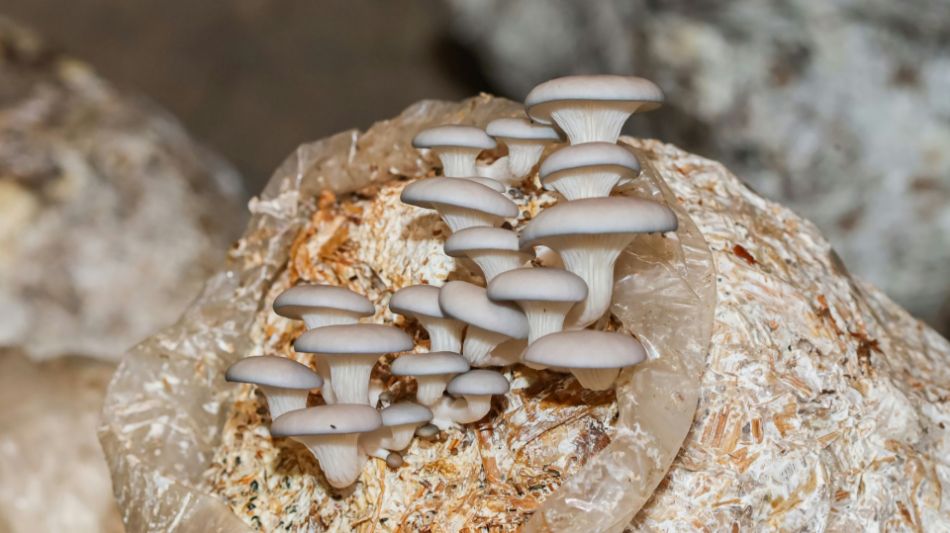Mushroom cultivation is an art that requires precision, knowledge, and attention to detail. One of the most critical aspects is disease management, which can compromise entire crops if not properly controlled. In this guide, we will explore how agricultural practices, including substrate rotation and cultivation room hygiene, can significantly reduce the incidence of fungal diseases. We’ll uncover advanced techniques, scientific studies, and interesting facts to optimize your production.
Mushroom diseases: the importance of preventive agricultural practices
Mushroom diseases can be caused by bacteria, viruses, molds, and other pathogens that thrive in poorly controlled environments. Prevention is always better than cure, and to achieve this, it’s essential to adopt targeted agricultural strategies. In this section, we’ll analyze why certain practices, such as substrate rotation and sterilization of growing environments, are fundamental for healthy cultivation.
What is substrate rotation and why is it crucial?
Substrate rotation is a technique that involves periodically changing the growing medium to prevent pathogen buildup. It works similarly to crop rotation in traditional agriculture, reducing disease pressure and improving the fertility of the growth medium. A study published in NCBI showed that this practice can reduce Trichoderma infections by 40%.
How to properly implement substrate rotation
To maximize benefits, it’s necessary to:
- Alternate substrates with different compositions (e.g., straw, sawdust, compost) to prevent pathogen adaptation.
- Use rotation cycles of 2-3 cultivation batches before reusing the same substrate.
- Incorporate biological amendments like beneficial mycorrhizae that compete with pathogens.
| Pathogen | Reduction in incidence with rotation | Recommended substrate |
|---|---|---|
| Trichoderma harzianum | 40-50% | Straw + compost |
| Fusarium oxysporum | 30-35% | Hardwood sawdust |
| Pseudomonas tolaasii | 25-30% | Sterilized compost |
Case study: a grower in Lombardy reduced Trichoderma infections by 60% by alternating sterilized straw and beech sawdust every two cycles, demonstrating the effectiveness of rotation.
Conclusion: substrate rotation isn’t just a good practice—it’s a necessity for those who want to cultivate mushrooms sustainably and profitably. Experimenting with different combinations can lead to surprising results.
Growing room hygiene: a barrier against infections
Maintaining a clean environment is essential to prevent contamination. Spores and bacteria can survive on surfaces and tools, becoming a constant threat. According to research by the USDA, 70% of contaminations stem from poor facility hygiene.
Advanced Sterilization Procedures
Here are some best practices:
- Sanitization with steam or chemical agents (e.g., hydrogen peroxide) between cycles.
- Air filtration with HEPA systems to reduce airborne spores.
- Adopting FAO protocols for managing contaminated biomass.
| Method | Effectiveness (%) | Cost (€/sqm) |
|---|---|---|
| Steam at 121°C | 99.9% | 2.50 |
| Hydrogen peroxide | 95% | 1.80 |
| UV radiation | 85% | 0.90 |
Statistic: growers using HEPA filters report a 75% reduction in spore contamination (Data: Mushroom Growers Association, 2024).
Conclusion: investing in hygiene isn’t optional. A clean growing room is the first step toward a healthy and abundant harvest.
Scientific insights and curiosities
The science behind combating fungal diseases is constantly evolving. For example, some studies are experimenting with bacteriophages to fight bacterial infections in cultivation. An article in Nature highlighted how these viruses could be a sustainable alternative to antibiotics.
Case studies and innovations
In the Netherlands, a company used strains of Bacillus subtilis to suppress Verticillium fungicola, reducing losses by 45%. This biological approach is now adopted by over 200 growers in Europe.
Conclusion: research is opening new paths. Staying updated can make the difference between a mediocre harvest and an exceptional one.
Mushroom diseases: a message for you, mushroom enthusiast!
If your passion for mushrooms goes beyond a simple hobby, you know very well that fighting mushroom diseases is a challenge, but with the right agricultural practices, it’s a challenge you can win. Whether you’re an experienced grower or a beginner, remember:
- Rotate substrates like a juggler spins objects: with precision and regularity.
- Keep your growing environment clean, because dirt is the best ally of diseases.
- Experiment and learn: every failure is a step toward success.
Mycology is a fascinating journey: keep cultivating, studying, and, above all, sharing what you learn. The world of mushrooms needs people like you!
The fungal kingdom is a universe in continuous evolution, with new scientific discoveries emerging every year about their extraordinary benefits for gut health and overall well-being. From now on, when you see a mushroom, you will no longer think only of its taste or appearance, but of all the therapeutic potential it holds in its fibers and bioactive compounds. ✉️ Stay connected - Subscribe to our newsletter to receive the latest studies on: Nature offers us extraordinary tools to take care of our health. Fungi, with their unique balance between nutrition and medicine, represent a fascinating frontier we are only beginning to explore. Continue to follow us to discover how these extraordinary organisms can transform your approach to well-being.Continue your journey into the world of fungi










